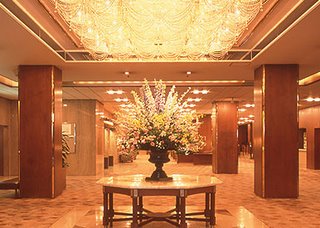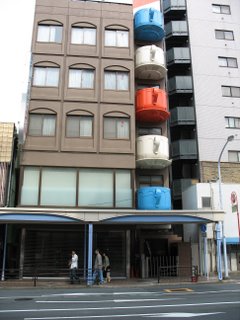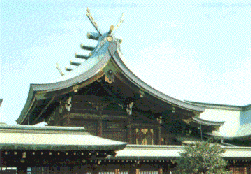
Does Malaysia have a national dish? No authority or national agency has yet come forward to set things in stone, but by default, that honour would have to go to nasi lemak.
Simply rice cooked in coconut milk (knotted pandanus leaves and even ginger or a stalk of lemon grass may be tossed into the pot to add fragrance), imparting a creamy texture to the grains, nasi lemak is available on almost every street corner and in almost every local-themed restaurant, served with everything from chicken to beef to cuttlefish.
It can be eaten at any time - breakfast, second breakfast, elevenses, lunch, tea, dinner, supper, post-boozeup - and the mingling of flavours and textures (creamy, hot & spicy, crunchy, nutty, etc) makes it simply … sheer ambrosia.
Essential condiments:
Fried ikan bilis (anchovies)Fried peanutsCucumber slicesWedges of hardboiled egg (variations: fried eggs, or slices of omelette)Sambal (a kind of cooked chili paste, plain with onions or with ikan bilis too)
Extras:
Chicken curry or rendangBeef curry or rendangMutton curry or rendangCuttlefish sambal or curryChicken liver and gizzard curryFried chickenFried cow lung (paru)Begedil (potato cutlets sometimes mixed with minced meat)Dried prawns sambal (some non-halal outlets cook this with minced pork)Cockles in sambalStewed kangkong (water spinach)
Some of the ways nasi lemak is sold/served:
Nasi lemak bungkus: "Bungkus" is Bahasa Melayu for "pack" or "wrap" and this is exactly what you get here - a simple pre-packed serving of nasi lemak topped with sambal, a sprinkling of fried peanuts and ikan bilis, sliced cucumber and a wedge of hardboiled egg.
Nasi lemak bungkus
Typically costing RM1 to RM2, depending on the amount of rice and the quantity of condiments that accompany it.
Many street vendors even toss in a plastic spoon to eat it with, so you can just dispose of everything after you've fed. NLB is mostly sold by street vendors, although lately it is not unusual to find it in delis, bakeries and even at the food counters of some supermarkets.
Sometimes it's sold pre-packed in microwaveable plastic containers with chicken or beef rendang for a little extra, say between RM3 and RM5 per pack.
Nasi lemak bungkus 'to order': Street vendors dealing in NLBTO typically set up a table on a street corner somewhere, and spread various pots and plastic containers out in front of them.
Street vendors dealing in NLBTO
A large wooden tub or insulated plastic pail contains the rice while the pots and containers will hold an assortment of condiments, rendang (a dry, spicy meat dish), curries, sambal and boiled or fried eggs.
Customers can just come up, pick what they want to accompany the nasi lemak, and the vendor will pack it all neatly in a paper wrapper. A typical NLBTO can cost from RM2 (plain with no meat) to RM4 or RM5 (with one type of meat and a fried egg). If you pick more to pack, expect to pay more too.
Nasi lemak a la carte
Nasi lemak a la carte: Sold at restaurants and hotel eateries, and served with most of the ingredients as described above, except a little more pricey than if purchased at streetcorners.
Prices range from RM3 to RM6 a plate (if you eat it at a coffeeshop or non-airconditioned restaurant); and upwards of RM8, ranging as high as RM15 to RM20, as you progress up the poshness pole.
Simply rice cooked in coconut milk (knotted pandanus leaves and even ginger or a stalk of lemon grass may be tossed into the pot to add fragrance), imparting a creamy texture to the grains, nasi lemak is available on almost every street corner and in almost every local-themed restaurant, served with everything from chicken to beef to cuttlefish.
It can be eaten at any time - breakfast, second breakfast, elevenses, lunch, tea, dinner, supper, post-boozeup - and the mingling of flavours and textures (creamy, hot & spicy, crunchy, nutty, etc) makes it simply … sheer ambrosia.
Essential condiments:
Fried ikan bilis (anchovies)Fried peanutsCucumber slicesWedges of hardboiled egg (variations: fried eggs, or slices of omelette)Sambal (a kind of cooked chili paste, plain with onions or with ikan bilis too)
Extras:
Chicken curry or rendangBeef curry or rendangMutton curry or rendangCuttlefish sambal or curryChicken liver and gizzard curryFried chickenFried cow lung (paru)Begedil (potato cutlets sometimes mixed with minced meat)Dried prawns sambal (some non-halal outlets cook this with minced pork)Cockles in sambalStewed kangkong (water spinach)
Some of the ways nasi lemak is sold/served:
Nasi lemak bungkus: "Bungkus" is Bahasa Melayu for "pack" or "wrap" and this is exactly what you get here - a simple pre-packed serving of nasi lemak topped with sambal, a sprinkling of fried peanuts and ikan bilis, sliced cucumber and a wedge of hardboiled egg.
Nasi lemak bungkus
Typically costing RM1 to RM2, depending on the amount of rice and the quantity of condiments that accompany it.
Many street vendors even toss in a plastic spoon to eat it with, so you can just dispose of everything after you've fed. NLB is mostly sold by street vendors, although lately it is not unusual to find it in delis, bakeries and even at the food counters of some supermarkets.
Sometimes it's sold pre-packed in microwaveable plastic containers with chicken or beef rendang for a little extra, say between RM3 and RM5 per pack.
Nasi lemak bungkus 'to order': Street vendors dealing in NLBTO typically set up a table on a street corner somewhere, and spread various pots and plastic containers out in front of them.
Street vendors dealing in NLBTO
A large wooden tub or insulated plastic pail contains the rice while the pots and containers will hold an assortment of condiments, rendang (a dry, spicy meat dish), curries, sambal and boiled or fried eggs.
Customers can just come up, pick what they want to accompany the nasi lemak, and the vendor will pack it all neatly in a paper wrapper. A typical NLBTO can cost from RM2 (plain with no meat) to RM4 or RM5 (with one type of meat and a fried egg). If you pick more to pack, expect to pay more too.

Nasi lemak a la carte
Nasi lemak a la carte: Sold at restaurants and hotel eateries, and served with most of the ingredients as described above, except a little more pricey than if purchased at streetcorners.
Prices range from RM3 to RM6 a plate (if you eat it at a coffeeshop or non-airconditioned restaurant); and upwards of RM8, ranging as high as RM15 to RM20, as you progress up the poshness pole.
Read More …


































